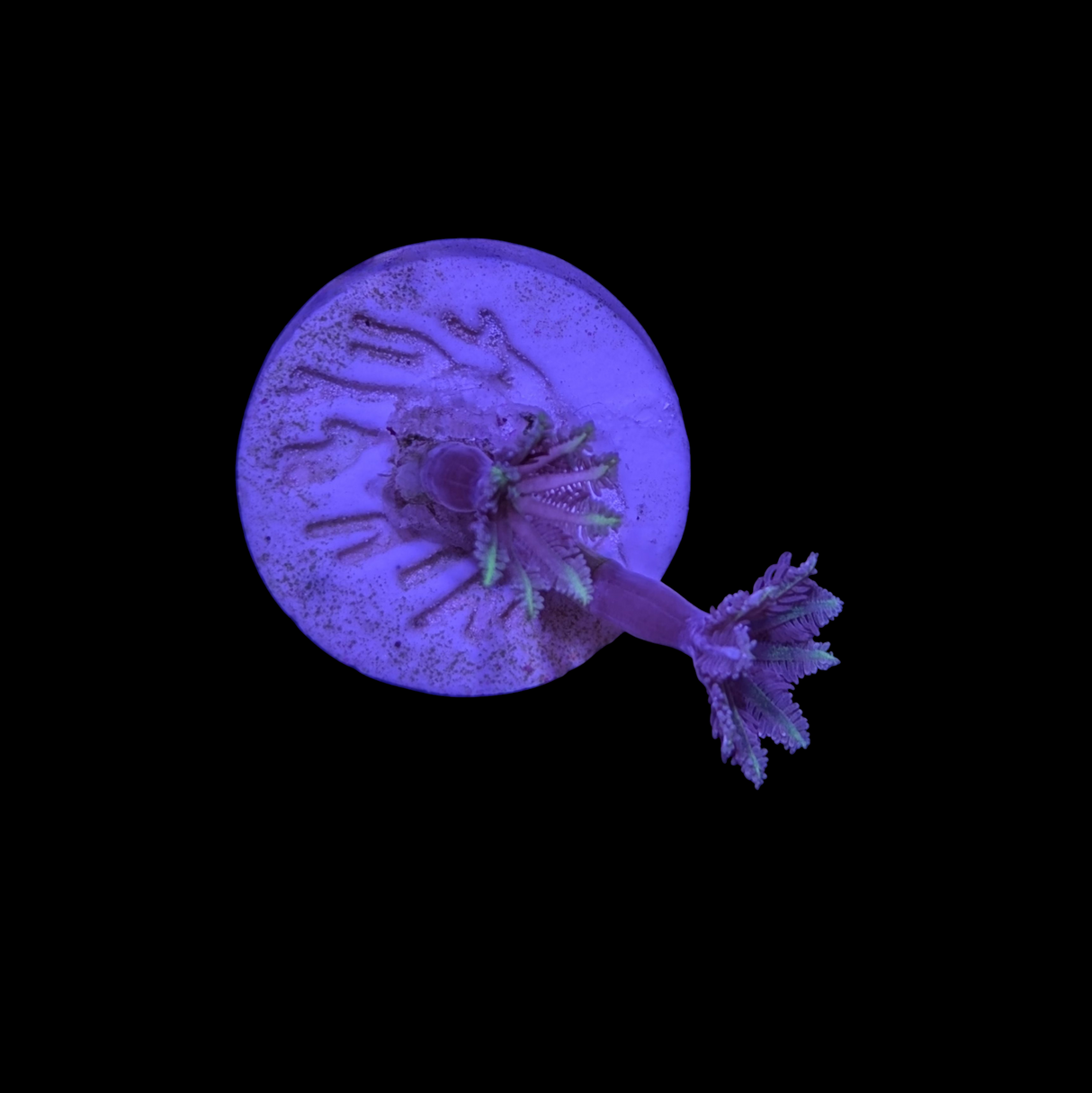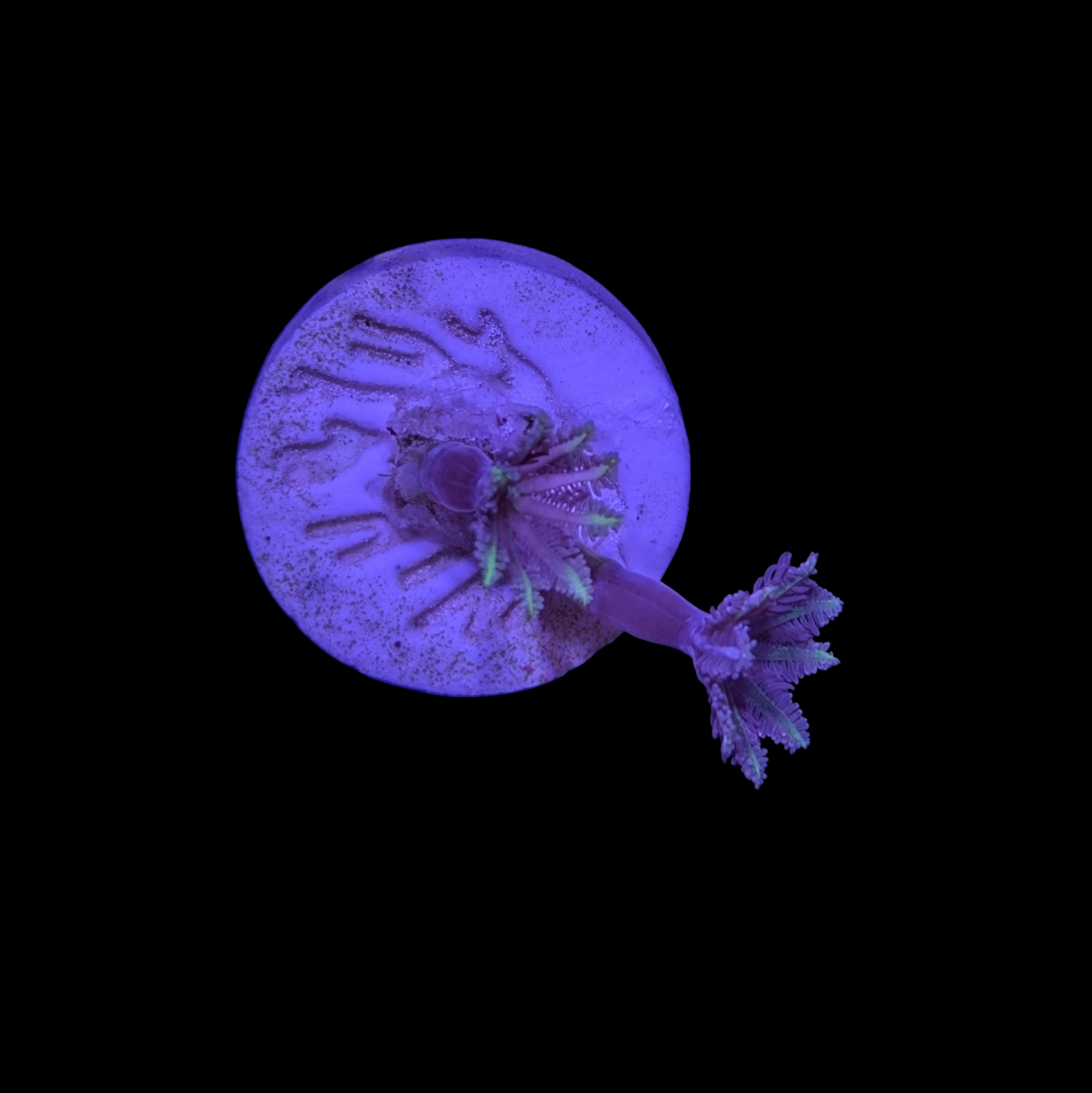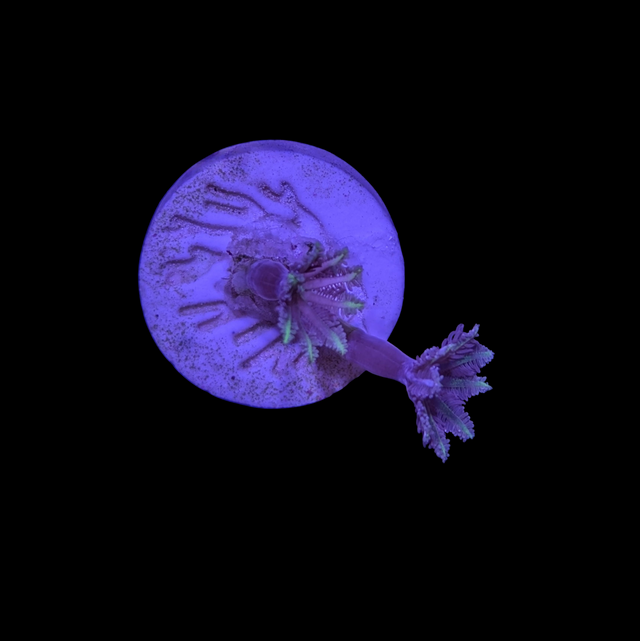Yellow Tip Clove Polyps
Yellow Tip Clove Polyps is backordered and will ship as soon as it is back in stock.
Couldn't load pickup availability
Description
Description
Type: Clove polyp
Name: N/A
Size: Small frag plug
Fixing:Small Frag Plug 20mm
Clove Polyp Coral Care Guide
Scientific Name: Clavularia spp.
Common Names: Clove Polyps, Glove Polyps
Care Level: Easy
Lighting: Low to Moderate (PAR 50-150)
Flow: Moderate to High
Placement: Middle to Top of the Tank
Temperament: Peaceful
Description
Clove Polyps (Clavularia spp.) are beautiful soft corals known for their delicate, feathery polyps that sway gracefully in the current. They come in various colors, including green, brown, and even neon variations, making them a striking addition to reef aquariums.
Tank Requirements
- Tank Size: Suitable for nano and larger reef tanks.
-
Water Parameters:
- Temperature: 72-78°F (22-26°C)
- Salinity: 1.024-1.026 SG
- pH: 8.1-8.4
- Alkalinity: 8-12 dKH
- Calcium: 400-450 ppm
- Magnesium: 1250-1350 ppm
- Nitrate: <10 ppm
- Phosphate: <0.03 ppm
Lighting & Placement
Clove Polyps thrive under low to moderate lighting (50-150 PAR). Place them in the middle to top sections of the tank where they can receive adequate light without being exposed to excessive intensity.
Water Flow
Moderate to high water movement is ideal, helping the polyps extend fully while preventing detritus from accumulating on them. Avoid direct, high-intensity flow that could cause stress or damage.
Feeding & Nutrition
Clove Polyps primarily rely on photosynthesis via their symbiotic zooxanthellae but benefit from supplemental feeding. Target feeding with phytoplankton or liquid coral foods a few times per week can promote enhanced growth and coloration.
Compatibility & Tank Mates
- Clove Polyps are peaceful and compatible with most reef-safe fish and invertebrates.
- They can grow quickly and spread, so monitor their growth to prevent them from overtaking other corals.
- Avoid placing them near aggressive corals like Torch or Hammer corals that may sting them.
Propagation & Growth
Clove Polyps spread by encrusting nearby surfaces. They can be fragged by cutting sections of their mat and securing them to new rockwork with reef glue or rubber bands.
Potential Issues & Pests
- May be susceptible to pests like nudibranchs and flatworms.
- Rapid growth can sometimes become invasive.
- Ensure stable water parameters to prevent stress and potential die-off.
Final Thoughts
Clove Polyps are an excellent choice for beginners and experienced reef keepers alike. Their flowing polyps add dynamic movement and vibrant color to any reef tank. With proper care and monitoring, they will flourish and become a stunning feature in your aquarium!
Payment & Security
Payment methods
Your payment information is processed securely. We do not store credit card details nor have access to your credit card information.





